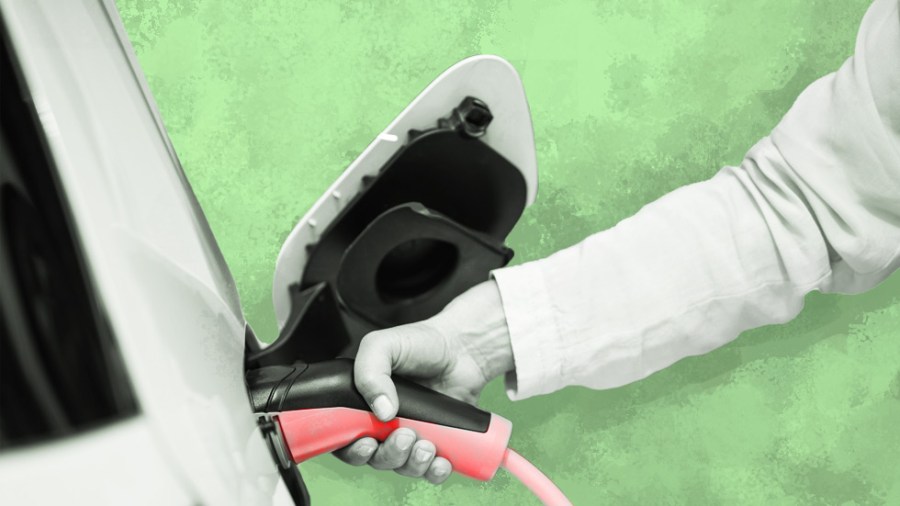Energy & Environment — California ups EV goal

A new California rule would triple the electric vehicles sold by 2026, and this year’s hurricane season is projected to be more intense than usual.
This is Overnight Energy & Environment, your source for the latest news focused on energy, the environment and beyond. For The Hill, we’re Rachel Frazin and Zack Budryk. Someone forward you this newsletter? Subscribe here.
California proposes tripling EV sales by 2026
Thirty-five percent of all new cars sold in California would be electric by 2026 under a new proposal from the state Air Resources Board.
Gov. Gavin Newson (D) has set a target of fully phasing out new fossil fuel-powered cars, the source of about 25 percent of the state’s greenhouse gas emissions, by 2035. The state is the first to set such a phaseout plan for vehicles. The new proposal would triple electric vehicle sales in the next four years.
What does this mean? “These standards and regulations expand off of the previous iteration of the program, which only went until vehicle model year 2025,” Kathy Harris, a clean vehicles and fuels advocate with the Natural Resources Defense Council, told The Hill. “So these standards that were released are an expansion of the previous program that has been in place for the past several years.”
The story so far: The latest action comes as gas prices have soared, particularly amid the Russian invasion of Ukraine, but price has been a major barrier to widespread consumer adoption of electric vehicles. Harris called standards like the ones announced Tuesday a step toward removing those obstacles to wider ownership.
“Setting these kinds of standards is going to put more electric cars and trucks on the road, which will help to protect drivers ultimately from volatile gas prices, [because] electricity and the transition to electric vehicles can reduce fueling costs for drivers,” she said.
Not every environmental group was as enthusiastic about the proposal, however. In a statement Wednesday, the Center for Biological Diversity called the rule “inadequate” and said it would be insufficient to achieve the state’s goal of carbon neutrality by 2045.
Read more about the proposal here.
Climate change caused wetter hurricanes in 2020
Climate change is responsible for making hurricanes that occurred during 2020 wetter.
The study, published Tuesday in the journal Nature Communications, found that human-caused climate change led to a 5 percent increase in rainfall in all named storms and 8 percent increase in rainfall during hurricane-strength storms.
Study author Kevin Reed said in a statement that more rain during hurricanes can make them more dangerous.
“Hurricanes are devastating events, and storms that produce more frequent hourly rain are even more dangerous in producing damage flooding, storm surge, and destruction in its path,” Reed said.
How’d they figure it out? “Our findings indicate that environmental changes caused by humans are signaling more and quicker rainfall, which have direct consequences for coastal communities and sometimes outlying areas,” he added.
The researchers used modeling that compared a simulation of the actual world to simulations of a world without human interference on the climate system.
The 2020 season had 30 named storms, those with winds of at least 39 miles per hour, which is the most on record.
So far, climate change has been responsible for more than 1 degree celsius of warming. Global leaders have said limiting the warming to about 1.5 degrees is necessary to curb its most damaging effects.
Read more about the study here.
FORECASTERS PREDICT ABOVE-NORMAL 2022 HURRICANE SEASON
The 2022 hurricane season will be above normal, according to predictions from tropical weather forecasters at AccuWeather.
Veteran meteorologist and hurricane expert Dan Kottlowski predicted that there is a “a higher-than-normal chance that a major hurricane could make landfall in the mainland United States, Puerto Rico and the U.S Virgin Islands,” according to the forecaster.
Specifically, the forecaster predicted 16-20 named storms. Of those, three to five of the storms are predicted to reach hurricane status.
The Atlantic hurricane season will begin on June 1, but the forecasters at AccuWeather also expect active preseason storms and urged people in hurricane-prone areas to prepare for an especially tough season.
The latest predictions come after two particularly bad years of storms.
The hurricane season of 2020 was especially severe at unprecedented levels as a record number of 30, named storms struck. The next year saw 21 named storms, according to AccuWeather.
The 30-year-average is only 14 named storms per season.
According to AccuWeather, a weak La Niña is in place and will contribute to the harshness of the 2022 hurricane season, particularly in the beginning.
WHAT WE’RE READING
- Wildlife trafficking thrives on Facebook despite pledge to fight illegal trade (The Guardian)
- ‘Please Don’t Tell’: Essex Boys’ Texts Spur Judge to Allow Lawsuit (Bloomberg)
- Newsom Hailed This ‘Critical’ Wildfire-Prevention Program. Two Years On, It Hasn’t Completed a Single Project (Capital Public Radio)
- Pregnancy becomes a more vulnerable time with climate change (The Washington Post)
- Big Tech Is Pouring $925 Million into Carbon Removal (The Atlantic)
And finally, something offbeat and off-beat: The hole truth.
That’s it for today, thanks for reading. Check out The Hill’s Energy & Environment page for the latest news and coverage. We’ll see you tomorrow.
Copyright 2024 Nexstar Media Inc. All rights reserved. This material may not be published, broadcast, rewritten, or redistributed..







